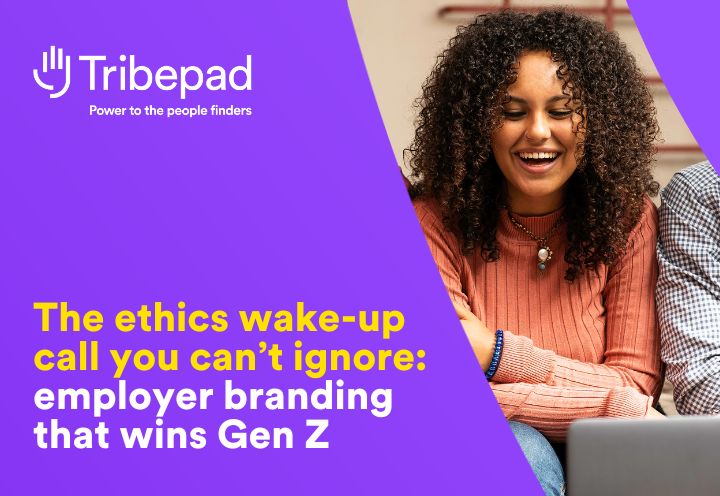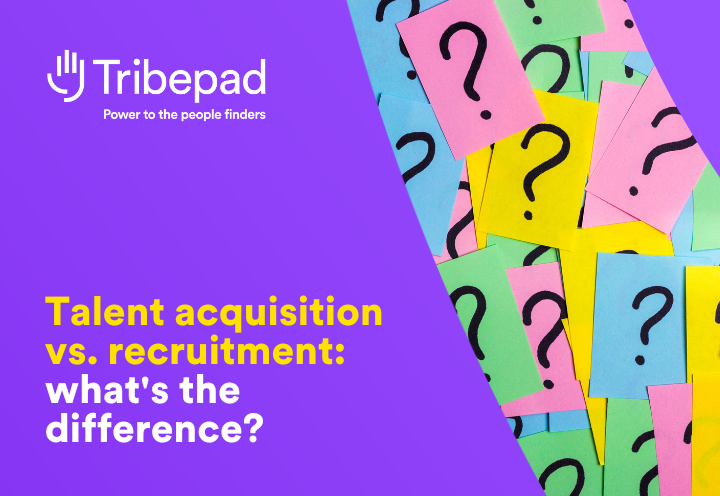An authentic, unique, and compelling employee value proposition – EVP – is the foundation of world-class employer branding. It’s the secret behind better, faster, easier recruitment – and engagement and retention too. Here’s how to build one.
We know your business is unique. We know your opportunities really are opportunities, and when you hire the right people into those roles, they’ll thrive.
But do jobseekers know?
Do jobseekers stumbling on, say, your job advert, see an amazing opportunity with a unique business? Or do they see yet another same-same, eyes-glossing-over job description, just like the other million-and-one they applied for this morning?
The answer often hinges on your employee value proposition – EVP.
Your EVP is the foundation of your employer brand. It’s your employer brand promise. It defines the value – the set of tangible and intangible benefits – your people get when they work with you.
In practical terms, an EVP is usually communicated through an internal-facing piece of written content, like your brand manifesto might be. But it’s not just a piece of comms. It’s deeply tied to your culture: your people live and breathe it every day.
The ‘employee value proposition’ describes what an organisation stands for, requires, and offers as an employer. The psychological contract between employers and workers addresses and sets expectations, beliefs, and obligations of the employment relationship.
A strong EVP means your brand naturally stands out from the pack, in an authentic and non-forced way. A strong EVP is a magnet for the right people, creating evangelists who love what you do.
It’s the recruitment version of Apple versus Microsoft or McDonald’s versus Burger King – not a feature list or a menu. Your EVP communicates what makes you, you.
A strong EVP brings a heap of benefits:
- Attract more applications from better-fit people, so you can make brilliant hires faster
- Build a stronger community of passive jobseekers, waiting in the wings when you need them
- Increase candidates’ commitment to your recruitment process – fewer dropouts, more accepted offers
- Take the conversation beyond salary, giving you a more rounded offering instead of an endless bidding war
- Improve new hire performance and boost engagement, to slash turnover (Gartner say a strong EVP reduces turnover by 69%)
So – is your EVP up to scratch? Let’s talk about getting there.
How to build an EVP that does your brand justice
1. Collaborate with HR and the business
Recruitment stands to win big here, but your EVP isn’t solely recruitment’s responsibility. Designing and developing an EVP takes collaboration across recruitment and HR, with context from business strategy, vision, and values.
You’ll need to evangelise the importance of employee value proposition and build a taskforce with buy-in from the top. Siloes are brick walls.
2. Map target hires’ priorities
Here’s where you build a profile of your target hires. Who are your ideal future hires and what do they care about? Why do they apply, leave, and stay?
This info helps ensure your EVP is relevant for the people you want to hire. There’s no point building an EVP around, say, amazing city centre offices when most hires want to work remotely. Gartner’s EVP design template suggests you gather these insights from recent employee and candidate surveys, focus groups, and exit interviews. Generic research into jobseeker preferences can also be valuable.
3. Segment different employee groups
Building an inclusive value proposition means recognising difference, not bulldozering it. Diverse employee groups have diverse needs and priorities: part of developing your EVP is understanding those perspectives, so you can reflect and serve them.
Employees, like customers, are not a homogenous group. It can be beneficial to personalise the employment relationship to the needs of a diverse workforce – and this can mean emphasising different elements of the value proposition to different groups of employees or creating subsets of the overall value proposition
4. Evaluate your talent competitors
Your proposition doesn’t stand in isolation. Look at the businesses you win talent from and lose talent to – why?
Interviews can be useful, either with current employees who came from your talent competitors or leavers going to talent competitors (although getting honest info here might be difficult). Scour careers sites, Glassdoor, LinkedIn, and job boards too, to learn how other businesses are positioning.
5. Set your vision
With all the info you’ve gathered so far, now’s the time to agree on a vision for your EVP. Where do you want to be? Avoid ‘everything-itis’ and ask challenging questions to get under the skin of the headline priorities.
Like: maybe you say you want to prioritise work-life balance. But do you really? Perhaps heavy workloads and tight deadlines are intrinsic to your explosive run-don’t-walk start-up culture. Perhaps what you actually want is employees to feel supported and excited as they race at 100mph.
Attracting, hiring, and keeping the right people starts with honesty. Designing an EVP isn’t about appealing to everyone. It’s about finding your people.
6. Understand your current reality
To realise your vision, start with a good understanding of where you are now. What are you doing well? What aren’t you doing well? Do different employee groups have different experiences?
Don’t just rely on senior leadership perspectives here. Go direct to the source – like with employee and candidate surveys, employee listening data, and exit interviews. You might be surprised what you uncover.
7. Create an action plan
Now you’ve started to identify some improvement opportunities to make sure you’re delivering on what matters. Here’s where you prioritise actions to move from your current state towards your vision, and map accountability to the relevant people.
For example, perhaps you envision complete flexibility as the foundation for a truly inclusive workplace that fits around everyone’s needs…
…but your candidates say they didn’t know your policy on flexible work and didn’t feel confident asking. And your employees say they’re getting mixed messages on flexibility in their performance reviews.
This stuff needs sorting before you can write an authentic EVP statement claiming flexibility.
8. Communicate your EVP
The tip of the iceberg; the star on the Christmas tree. Here’s where you capture all your work so far and present it to other people across the biz in an engaging, memorable way.
That usually looks like a short presentation or document, like your values and brand guidelines. You might emphasise or expand on different areas for different teams or employee groups, too, alongside your core proposition.
Your EVP can become a self-reinforcing message that gets stronger and stronger – if everyone internalises it. Hiring managers talking to team members; recruiters talking to jobseekers; an employee referring a friend: everyone should be beating the same drum.
Find your people
Sparks fly when the right people are in the right roles – but if you can’t communicate why you’re special, those people might pass you by. Your EVP is your foundation for building and growing your work tribe, by shouting from the rooftops what makes you, you.
Tribepad are the trusted tech ally to smart(er) recruiters everywhere. Because we know that when people find the places they belong, we all flourish.




